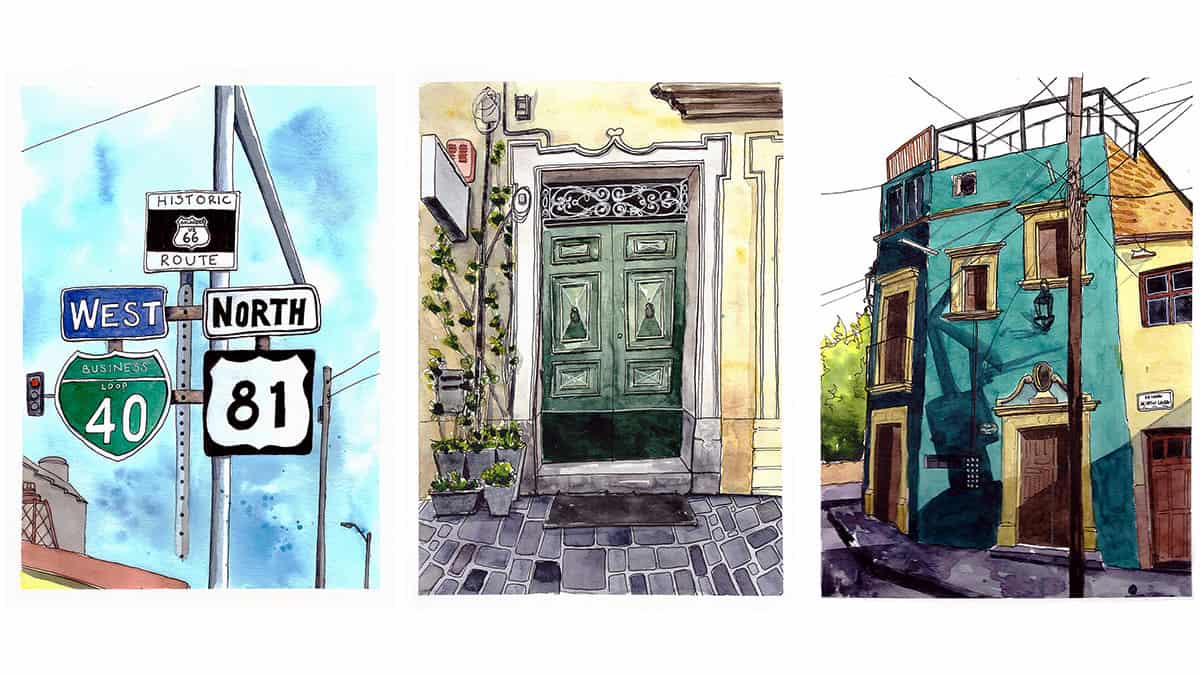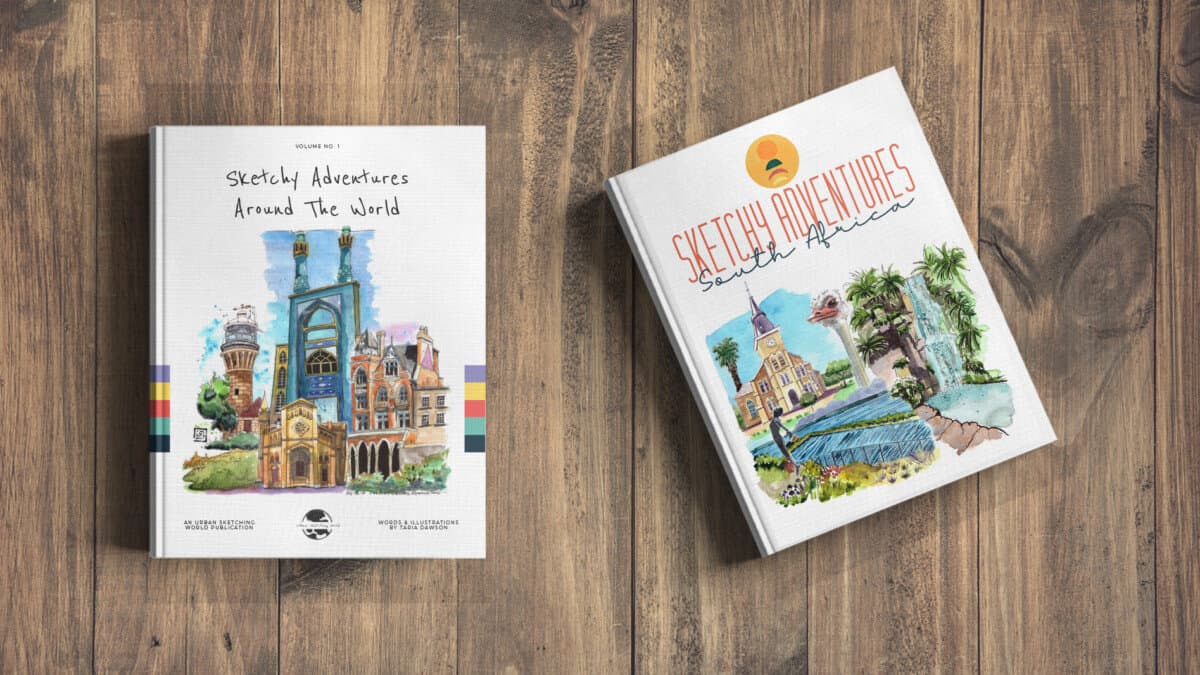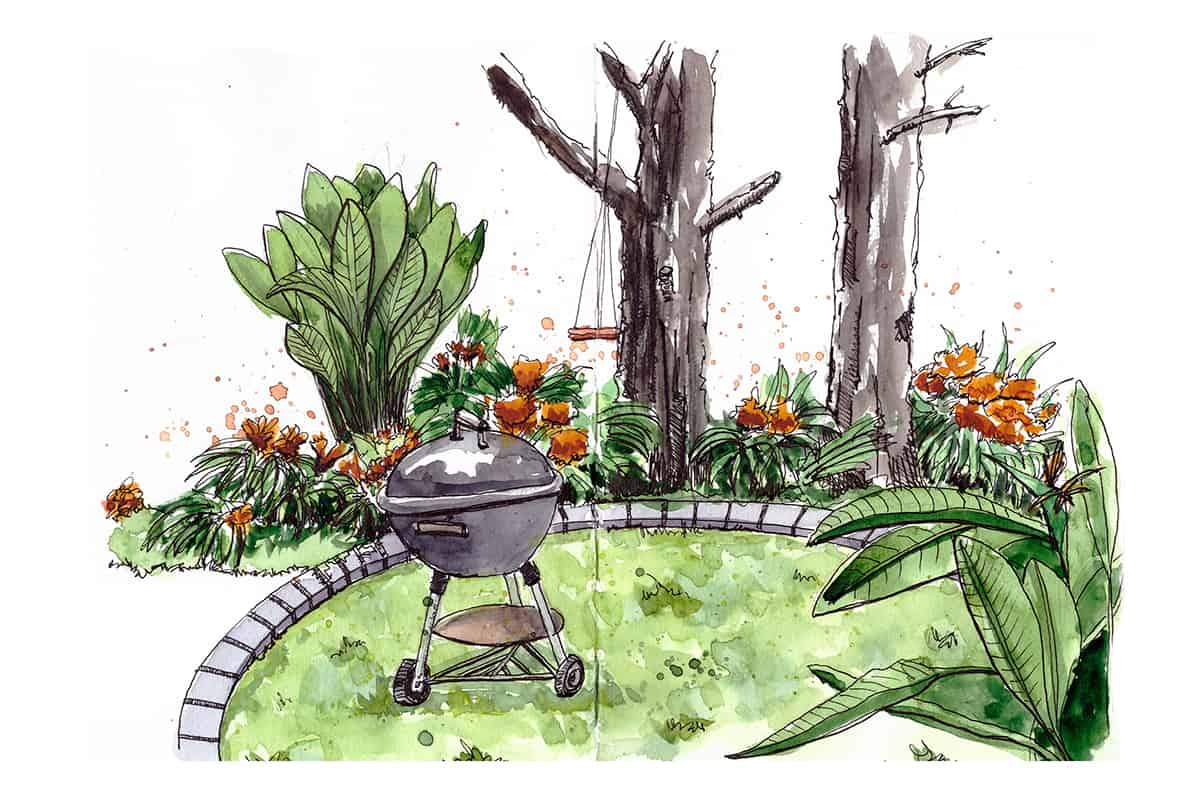If you are a person who continually struggles to find time to fit a regular sketching habit into life then I think this post is really going to help you out.
I want to give you loads of ideas and actionable strategies so you can find time to sketch every day.
Drawing Takes Time
Ok, so let’s address the issue head-on: learning to draw does take time and commitment.
The same as learning any skill.
I believe you can learn to draw (and at any age – I started to learn at the age of 26) just like you can learn how to cook or public speaking.
Dedicating time, focusing on fundamental techniques, repetition and growing confidence are the key components to learning anything (I believe).
I know it’s a bit strange I keep saying you need to dedicate time when we are talking about how to sketch when you don’t have time but bear with me.
Learning to draw is one thing, and yes it does take time but the time spent is cumulative. If you practice 20 minutes a day (just like you were forced to practise your piano scales every day- ha) then over time those minutes will all add up.
In his book, ‘Draw Buildings and Cities in 15 Minutes: The Super-Fast Drawing Technique Anyone Can Learn’, Matthew Brehm explains:
‘But, though it may seem a paradox, working within small windows of time is actually a good way to combat frustration. Brief drawings help us to stay focused on repeated, short bursts of practice rather than elaborately developed drawings that require far more time without necessarily producing better results.’
Matthew Brehm
I don’t think we ever stop learning but let’s say once you move past the beginner stage of drawing and you now feel you can convey what you want on the page with (some) confidence it won’t look too bad, guess what…yep, you should still draw as much as you can.
There are many barriers (that’s me being polite – what I mean to say is ‘excuses’) to not doing something. Whether it’s drawing, homework, cleaning or fixing something in the house, there’s always a reason you can’t do it. And that reason usually revolves around not having time.
People have busy lives. People seem to be busy busy busy…ALL of the time.
It’s important to have downtime from a busy schedule. A lot of people will reach for the TV remote, sit on the sofa and just chill – and that is totally fine. No one should judge anyone for that.
But maybe we can look at drawing as downtime too. A gentle calming exercise helping us to be present, to observe, to get lost in our own internal world. This may be easy for me to say as I am not too much of a TV person, but when people wonder where all their time goes, this is usually one of the major culprits.
(As a side note if you are interested in urban sketching as a tool for mindfulness, check out my post here).
Why do we not have time to draw?
There are many reasons people are busy and don’t have time to spend on creativity or hobbies. I think if we first identify why we feel we do not have time then maybe this will help us determine some solutions. I’m sure some or even all of these things may apply to most people.
- Family and home commitments – caring for children, a parent or elderly relative, single parent, large family with lots of activities going on, housework, chores, DIY
- Friends – social engagements, parties, trips
- Work – full-time, long and/or irregular hours, long commutes, physically or emotionally draining occupation
- Other hobbies – playing or watching sports, exercising, cooking, gardening, etc.
- Side hustle projects – a lot of people these days are working on businesses or projects on the side of their regular day job
- TV – Netflix, cable, movies, sports, video games
- General procrastination – the fear of getting started
As you can see (and as I am sure you already know) us humans are busy folk.
Do you want to learn how to sketch your own adventures in ink & watercolour?
GET 50% OFF FOR A LIMITED TIME ONLY!!
I will show you my exact sketching process in ink and watercolour. I have travelled around the world in the last 3 years and this is my go-to system of creating beautiful yet quirky illustrations to capture the magic of my discoveries.
We will work through 3 projects, step by step (pictured below), all of which are real-life examples of things I have sketched along my travels. I provide the photo references you can work from.
We will start by choosing a composition, laying in the initial pencil sketch, adding ink lines, layering watercolour and adding the final touches.
This and much more are included in my course, Sketch Your Adventures, click the button under the image to find out more!

Making or Finding Time?
I think it is one thing to consciously make time for drawing, like actually scheduling in some time to sit at a desk somewhere and draw, and a whole other thing to find time to draw.
If we can integrate drawing into the activities we are busy with, this can be a way to find some time.
This is where urban sketching really comes into its own.
We do not need to put time aside for urban sketching. The point of urban sketching is to record life, record what’s going on around us, right there and then. Therefore in some regards, you don’t really need to schedule a time to do it.
Urban sketcher, Paul Heaston, has to care for his young child throughout the day while his partner works, therefore, he fits his drawing time around his child’s schedule. If he needs to take her somewhere or wait around somewhere, he will sketch while he sits in the car. If she is napping at home he will sketch one of the rooms in his house. He always finds a way to sketch and a subject to sketch.
Check out my ebooks with hundreds of ink & watercolour travel sketches from all over the world. Get some inspiration for your next trip…

10 Ways to Find Time for Urban Sketching
Here are my strategies to squeeze urban sketching into daily life. I hope these 10 ways to make time for sketching inspire you to sketch daily whenever and wherever you can, to capture the moments of magic in this busy life we lead.
#1 – Carry a sketch kit everywhere
Your sketch kit should be small, minimal and fit easily in a pocket or purse. When you have fewer tools to worry about then less time is spent wondering which one to use.
I recommend an A6 sketchbook and a pencil and/or pen.
This should be your everyday essential kit that you never leave the house without.
#2 – Get used to drawing around people
In order to fit drawing into your life, you need to get comfortable with whipping out your sketchbook and drawing at any given moment. This may be while you are having a coffee with friends, while you are at a lunch with family or in the pub!
#3 – Draw the mundane
I am very guilty of this. I am always looking for a pretty building to draw. But it is not often there is one close at hand. Therefore sketching the house next door, the car parked on the street, and the people sitting in the cafe or the living room at home are far more realistic subjects. The beauty of urban sketching is that you can do it anywhere and even when you sketch the most mundane of things, somehow a sketch is still magical to look at.
#4 – Draw while you wait
Even though we are so busy, don’t you find we have to wait a lot too?
We wait for the doctor or hospital appointments, we queue in the post office, we wait for kids to be finished with their after-school activities, we wait for busses and trains, we sit at airports for hours and then sit on a plane for more hours after that.
These moments, this “dead time”, is absolute prime sketching time.
#5 – You don’t have to finish
Just because you start drawing, doesn’t mean you need to finish it as a beautifully rendered study. Sketching is all about being fast and loose, recording things quickly and getting the essence down in minimal lines. Make it messy and scribbly, be free! You do not have to finish anything and it absolutely does not need to be perfect.
#6 – Size matters
Depending on how much time you have will determine the size of your sketch. Don’t start a panoramic architectural sketch when you only have 30 minutes. Trust me, I’ve done this (by accident of course).
Check out this series on my Youtube channel in which I see how much I can sketch on location in 30 minutes!
Consider the size of your sketchbook. As mentioned above, something that’s an A6 size is perfect to carry around with you every day. It’s also less conspicuous to get out and start drawing on.
#7 – Don’t draw everything
Expanding on the point above, if you only have 20 minutes and you have all sorts of visual stimuli around you, look for something that particularly catches your eye and focus on that. It could be one particular person, like the way they are sitting or standing or their features. It could be someone’s dog; a particular design or pattern on a wall, floor or piece of furniture; a decorative architectural element; a statue; or even a particular tree or flower. Whatever is in your field of view that really catches your eye – sketch that.
Below is a sketch of a door I saw in Valletta, Malta, the city of ornate doors!
#8 – Keep it loose
If you are going to go a bit bigger with your sketch and you want to fit in a few more elements than perhaps you will have time for, don’t get lost in the details. Instead, keep your sketch loose.
Check out my post for more information on how to sketch loosely.
For some examples of sketching loosely by other urban sketchers, check out this article.
#9 – Let go of the need for realism
Capturing the world around you does not mean drawing in a photo-realistic style. Explore the more stylistic works of urban sketchers such as:
Then think about how you can let yourself have fun expressing the world around you in weird and wonderful ways in your sketchbook.
Some of my favourite online classes
- Urban Sketching: Express Your World in a New Perspective – Lapin
- Exploratory Sketchbook: Find Your Drawing Style – Sarah Van Dongen
- Illustrated Life Journal: A Daily Mindful Practice – Kate Sutton
- Artistic Watercolour Sketching: Dare to Sketch – Felix Scheinburger
#10 – Enjoy the process rather than focusing on the result
I think this is the key to it all to be honest! If you are overly critical of your results you are not going to enjoy to process and if you don’t enjoy the process then you won’t want to sketch and if you don’t sketch regularly, it’s unlikely you will make much improvement.
It’s a vicious cycle!
My personal advice to avoid this cycle is as follows:
- Use a cheap sketchbook that you’re not precious about
- Use the sketchbook to write reminders, appointments, shopping lists in (again, not making it precious)
- Do not share your sketches. Knowing the sketches are for your eye only takes the pressure off
- Try to let go of any expectations
- Try exercises such as contour drawing
- Draw over the top other drawings on the page, and let your lines overlap (I actually really like this effect)
All of these points are ways in which to free yourself from pressure, expectation, the need to be perfect and the preciousness of your sketches and sketchbook. Then you can just enjoy the time spent recording things in your sketchbook. For actual demonstrations on how to loosen up and sketch with more freedom, check out Patreon where I share weekly full-length demonstrations around a different theme each month.
Final Thoughts
I hope this post has helped illustrate (get it?) that despite how busy you are, there are ways and means to fit a regular drawing habit into your life, especially when it comes to urban sketching.
Pop that sketchbook and pen in your bag now and next time you are out somewhere and you have 20 minutes to kill, get that sketchbook out and start drawing. Don’t focus on whether it is good, bad or ugly, just engage in the habit of sketching your life.
And then…?
Just keep at it.
If you would like to add some urban sketching inspiration into that busy inbox of yours then please join my newsletter! Here to fuel your sketching addiction even further. I email a maximum of once a week because, well, I’m busy right?!

